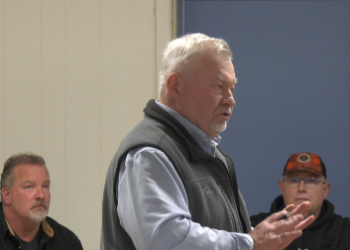IRON MOUNTAIN, Mich. The Oscar G. Johnson VA Medical Center’s collaborative cultural considerations presentation stressed the significance of recognizing the unique challenges and experiences faced by Native American veterans, and ensuring they receive the healthcare and services they deserve. The VA serves over 50,000 Native American veterans nationwide, with the region’s service network dedicated to serving 1,500 Native American veterans.
The presentation encouraged engagement in dialogues, attendance at events, and support for organizations working on behalf of Native American veterans as a way to show appreciation for their service. Additionally, it was mentioned that there are approximately 140,000 Native American veterans, many of whom have received prestigious military awards.
The Native American Program Manager’s presentation on cultural considerations for Native American Heritage Month covered various important topics, including:
1. The collaboration between Madison Wisconsin’s VA hospital, VISN 12 sister facility Iron Mountain, and Tomah VA Medical Center to provide cultural resources and education to VA stakeholders and the public.
2. The significance of Native American Heritage Month in honoring the contributions and experiences of Native Americans throughout history, as well as the importance of respecting tribal sovereignty and promoting self-determination.
“I’m speaking to you today from the ancestral lands of the Anishanabe people. The Anishanabe people are one of the peoples of the three fires. They have known this land as a relative for millennia, and they remain our hosts on it,” Beauchamp began, informing that the information she shares is with permission from the Native American veterans she’s served in her 20 years of experience.
3. The challenges faced by Native American veterans, and the need to ensure they receive the recognition, healthcare, and services they deserve.
4. An upcoming event led by Rita Kingswan, focused on addressing historical trauma and personal healing for staff, particularly those working with Native American veterans.
5. Gail Beauchamp’s background and experience as the Native American Program Manager at the Oscar G. Johnson VA Medical Center.
6. The importance of seeking input from Native American veterans to understand their cultural preferences and considerations for healthcare.
“Keep in mind that you may not always hear the same verbiage that you might hear from a non-native veteran. So, if a traditional native veteran comes in, they might not say ‘I’m depressed,’ but they might say I have a heavy heart as an example,” Beauchamp explained, adding, “They may want family to come with them, and maybe that’s not generally accepted at first appointments, etc in a given facility, but it’s very important to consider that that might be important to them particularly with elders, because they might be looking to support from their family to help them explain what they’re presenting for.”
“It’s also very important to again, remember that the lack of direct eye contact does not mean they’re not interested. it does not mean they’re not listening. It’s just a different cultural way of being.”
7. The diversity and heterogeneity of Native American cultures, and the need to tailor cultural considerations to the specific beliefs, values, and life ways of the Native people in the area.
8. The importance of asking respectful questions when interacting with Native individuals and being aware of the terms “Indian” and “Native American.”
“Should I say Indian or Native American? That’s a question that we hear a lot. Many of our native people prefer the term Indian. Both terms reflect language used in treaties with the federal government, and neither is what native people likely call themselves in their own languages, so again if you’re afraid of offending, ask,” remarked Beauchamp.
9. Characteristics of traditional Native Americans, including their belief in belonging to the Earth, the value of harmony over competition, and the interdependent nature of their communities.
10. The historical roles of women and men in Native American societies, emphasizing the importance of both roles.
“After first contact with non-native people with the Europeans and the euro Americans, women’s authority steadily declined because of cultural assimilation. Euro- American men insisted on dealing with Native men only in trade negotiations, and they demanded that native people follow Christian modes of patriarchy and gender division of labor that subsequently made women into house keepers,” stated Beauchamp, expanding, “As far as historical male, gender roles, men were considered warriors, and I want to just read a quote from Sitting Bull that really best describes what warrior means for native people. ‘Warriors are not what you think of as warriors. The warrior is not someone who fights. The warrior for us is one who sacrifices himself for the good of others. His task is to take care of the elderly, the defenseless, those who cannot provide for themselves.’ So as native people were then placed on reservations by the government, a native man’s role as a warrior who carried the people was taken away. Leaving the reservation was illegal, carrying a gun or knife to hunt was illegal, hunting itself was illegal. The government then tried to make men into farmers, and to give them commodities. The result of that was shame, guilt, mental health, and substance use issues, and then sadly that trauma became intergenerational.”
11. Differences in the perception of time between Native Americans and the majority society.
“Time is seen as fluid and circular in Native society verses in the majority society, where time is often seen as linear. Native Americans who are traditional, are not focused on time as told by the clock. They are people oriented, not appointment oriented, so if one of my Native Veterans would meet a friend on the way to an appointment, that person would see it as appropriate and polite to stop and visit versus being on time for the appointment. So, as care providers, we can certainly explain our time constraints, but don’t necessarily expect timeliness. Lack of timeliness does not indicate a lack of interest in treatment. That’s very important to remember,” Beauchamp shared.
12. The special regard for senior citizens and children in Native American communities, and their lower frequency of dementia.
13. Communication differences, such as stoicism, silence, and the importance of listening and waiting.
“In verbal communication, slow down when you’re communicating with a Native veteran, especially if it’s an initial encounter. Frame your questions to be respectful, and caring when you’re asking them about their traditional cultural involvement. Remember that native languages have some of the longest pause times compared to other languages, especially English,” Beauchamp informed. “For example, as one of my traditional Native Veterans shared with me in the Ojibwe language there is no word for goodbye. There is no word for ‘you’re welcome’. That’s just a couple of many examples of how there are not always equivalent words for concepts. Silence after a point is made indicates a polite disagreement,” she continued.
14. The fluid nature of gender and sexual orientation, particularly the concept of “two-spirit” individuals, and the importance of being good allies.
“Two-spirited people have been president for countless generations are actually documented in over 100 tribes, and although the term two-spirited has been used to identify as members of the LGBTQ community, not all two spirited native people were LGBTQ. Many historically were neither considered male nor female. And it was more about ethnic and spiritual heritage versus about gender identity. It’s important again to remember, and to understand that in Native American cultures attitudes about sex and gender can vary, and be very diverse. Traditional two-spirited people historically had specific roles and responsibilities. It was a very important role that they had to be balance-keepers in their communities. They sometimes flll the roles of healers medicine keepers. They kept oral traditions and songs. They were sometimes name-givers. They had special roles in various Ceremonies, and then, with the arrival of colonization of Christianity, two-spirited people suffered abuse, oppression, even death,” Beauchamp relayed, adding “It is very important for many native people, as again my traditional veterans have shared, to be good allies for two-spirited members of their communities.”
15. Strategies for helping Native veterans reconnect with their culture, navigate the VA system, and address trauma.
“I have provided care for many native veterans, who sadly, were boarding school survivors. I think that there’s more of a willingness if we as a VA go toward our Native American Veterans with informational presentations, like this, and expanding our knowledge of culturally sensitive care, and again, allowing them to be the content expert on what they need from us,” stated Beauchamp.
16. The focus on wellness and well-being in assessments and care for traditional Native veterans.
“If you are looking at developing assessments, or developing a toolbox for geriatric care, etc. it’s very important to keep in mind that the focus on wellness and well-being is very important versus a focus on symptoms are symptom clusters. So any tools that you can look to, any assessment packages that you might be able to find that can look more toward that versus symptom identification and rating how severe or not some symptoms are will be very helpful in working with traditional Native Veterans. That’s what we’ve found,” explained Beauchamp.
17. The importance of showing respect and involving Native veterans as content experts in their care.
18. The need to interpret non-standard verbiage and non-direct eye contact as different cultural communication styles.
“As far as nonverbal communication, physical distance with those outside the culture – several feet is usually a comfort zone. Eye contact may not be direct, or only briefly direct. The gaze may be directed perhaps over your shoulder. This does not again indicate a lack of interest, or lack of engagement. Emotional expressiveness is controlled, except for humor, particularly in an initial encounter. Body movement is minimal, and touch is usually not acceptable, except perhaps a handshake,” informed Beauchamp.
19. Caution against self-educating on Native American cultural considerations solely from the internet and the value of seeking information from Native veterans and communities.
The cultural considerations presentation to honor the start of Native American Heritage Month provided valuable insights into the cultural considerations necessary for providing effective healthcare to Native American veterans, and promoting cultural sensitivity and respect.
For more information about benefits available to Native American Veterans, visit:


















